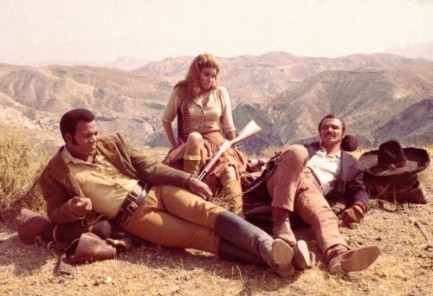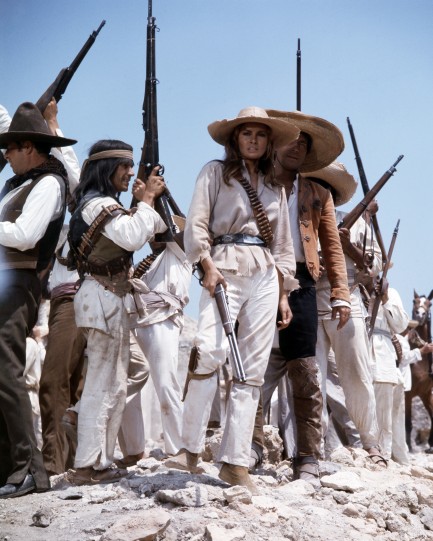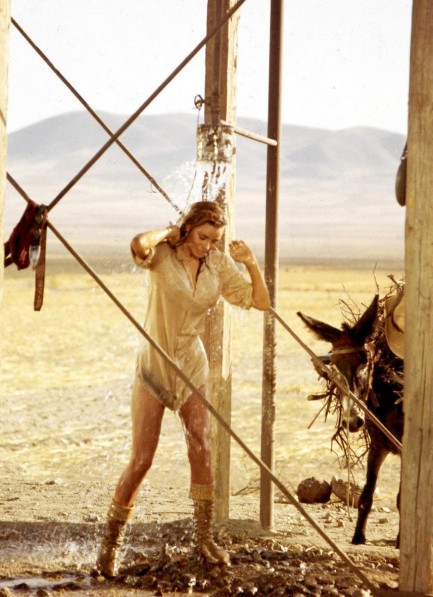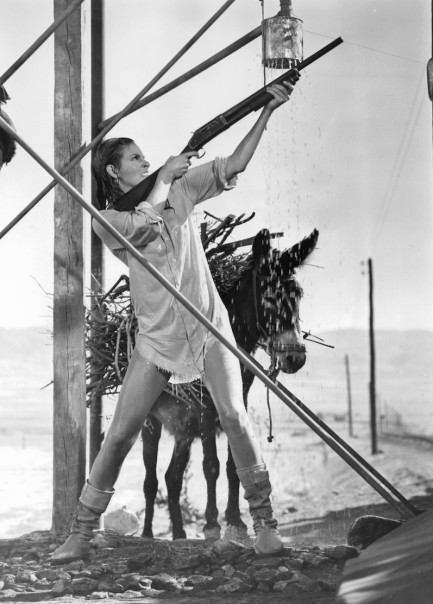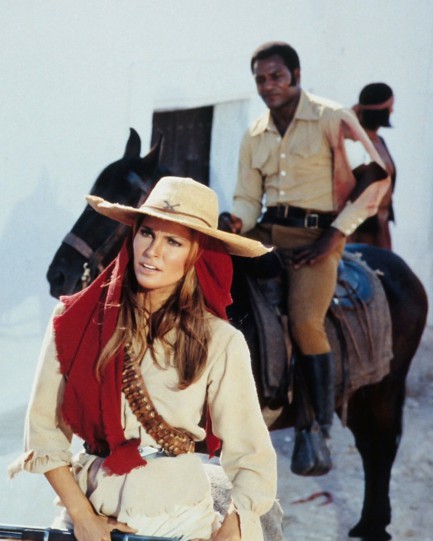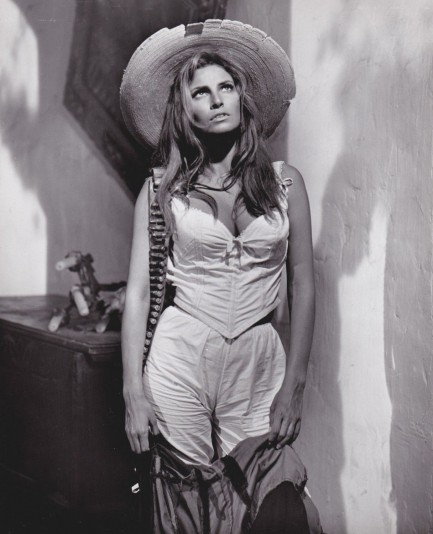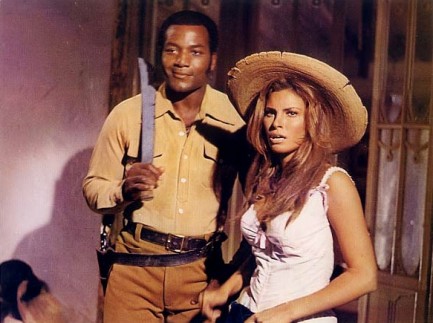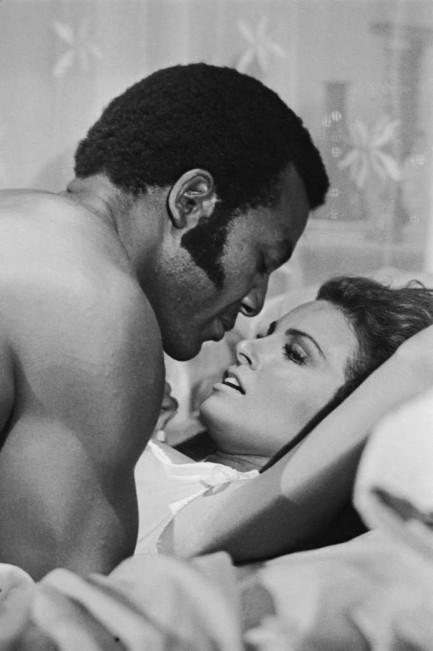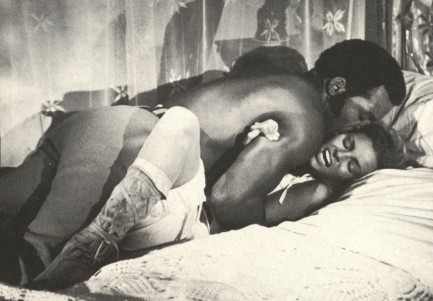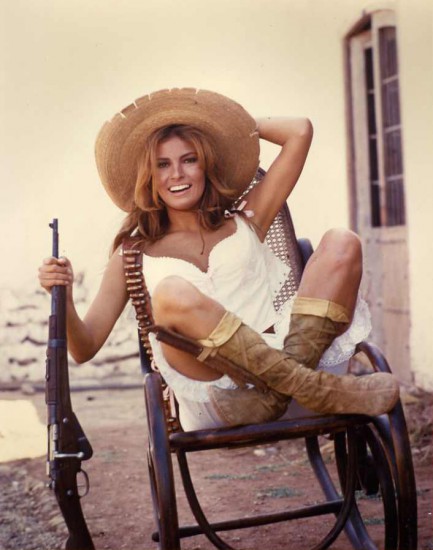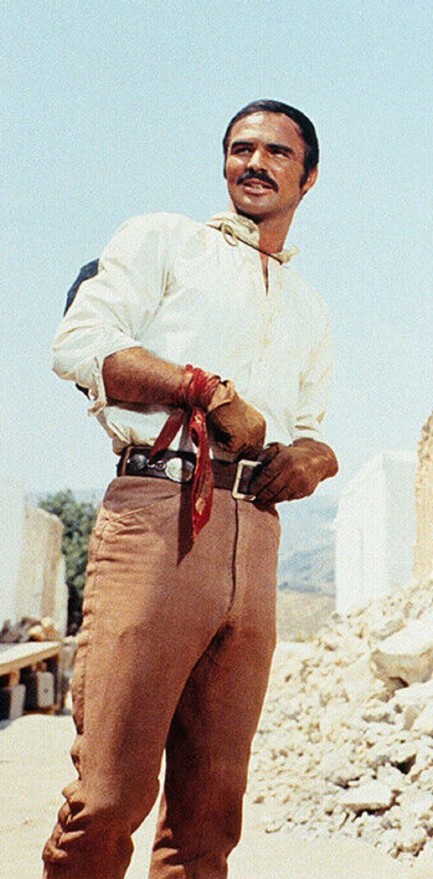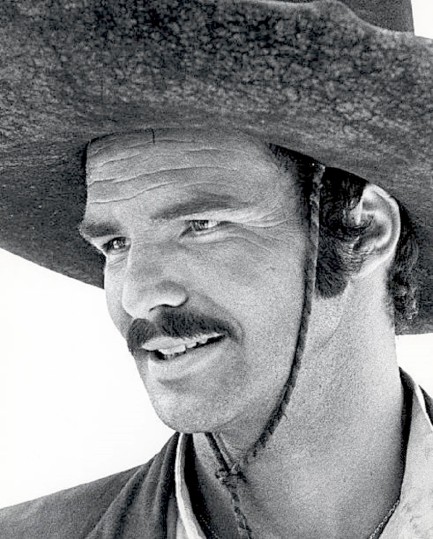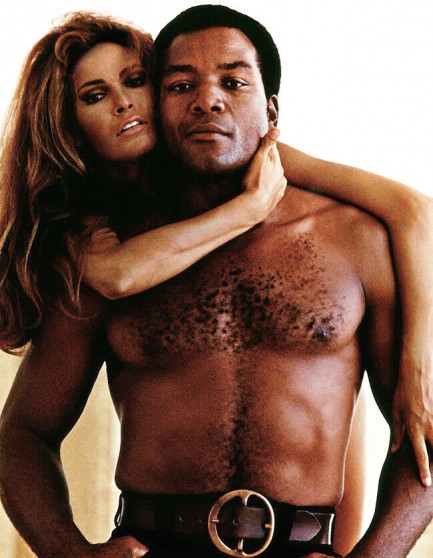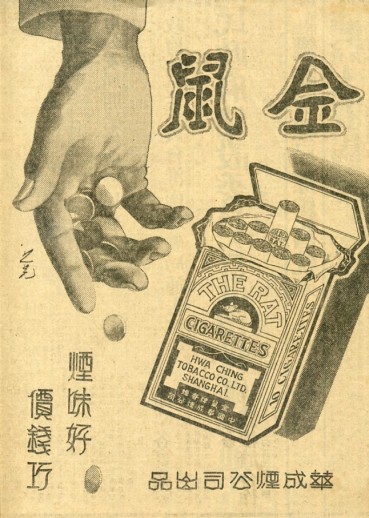| Vintage Pulp | Jun 3 2011 |


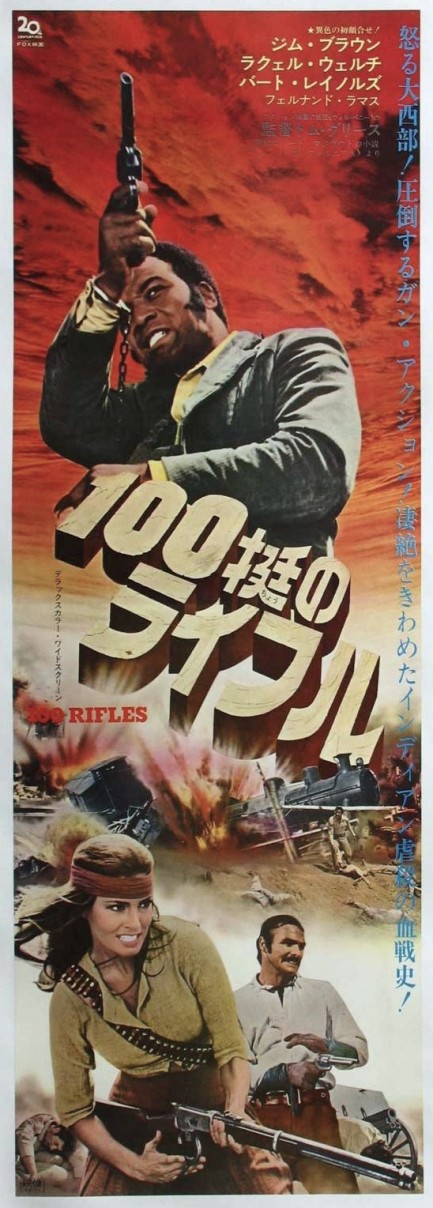
When we saw these Japanese posters for the 1969 western 100 Rifles, we made a special point to watch the film just so we had a good reason to share the art. So there you go. Now as for the actual film, there’s a moment about halfway through where mega sex symbol Raquel Welch says to black ex-NFL football star Jim Brown, “Do you want me?” That’s about as rhetorical a question as has ever been asked on a motion picture screen. Of course he wants her—who wouldn’t? But this being an American movie, the real question is, “What will the consequences be?” Because after all, even though interracial romance works just fine for millions of real life couples, in Hollywood that simply can’t be. Especially when you’re talking about heterosexual black males.
So we know someone’s going to end up dead. We could have prefaced that last statement with a spoiler alert, but we all know it wasn’t really a spoiler. As moviegoers, we’ve been trained to know happily-ever-after isn’t a component of these black/white love affairs. When 100 Rifles was made in 1969, it may have seemed America was on the way—if perhaps a bit turbulently—to a post-racial future. But forty-two years later 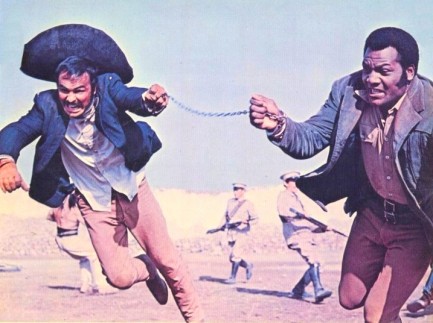 we bet you can’t think of three other instances where a top tier white starlet had a love scene with a black man. So even though 100 Rifles offers up a reasonably compelling tale of guerrilla warfare on the Mexican frontier, and Burt Reynolds co-stars in a role perfectly crafted for his special brand of smarmy brilliance, and you even get an unforgettable nude minute of cult siren Soledad Miranda, you mainly come away with yet another reminder of how edgy Hollywood was capable of being back then, and how risk averse it is today.
we bet you can’t think of three other instances where a top tier white starlet had a love scene with a black man. So even though 100 Rifles offers up a reasonably compelling tale of guerrilla warfare on the Mexican frontier, and Burt Reynolds co-stars in a role perfectly crafted for his special brand of smarmy brilliance, and you even get an unforgettable nude minute of cult siren Soledad Miranda, you mainly come away with yet another reminder of how edgy Hollywood was capable of being back then, and how risk averse it is today.
We don’t speak of risk merely in terms of race, but in general. Despite modern cinema being awash in CGI and 3D and THX sound and obscene budgets, as well as dozens of swaggering young stars, along with teams of clever writers and yachtfuls of execs who all claim to be mavericks, the movies are overwhelmingly soulless. 100 Rifles is not a great film, but even as a late-1800s period piece it asks relevant 1969-style questions about racial mixing, social struggle, and offers serious introspection about the worth of warfare. It's an interesting product of the time from which it sprang. That's worth a lot, in our book. By comparison, if we consider post-millennial movies a product of the time in which we now live, then the message seems to be: just don’t make us think.